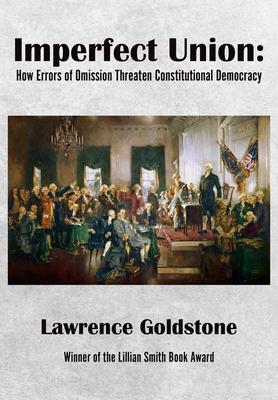In this new and original study of the origins of the United States Constitution, award winning scholar Lawrence Goldstone demonstrates that what was left out of the document by the Framers is of equal importance to what was included. Because of the deep divisions present in the United States at the beginning of the Republic, delegates to the Constitutional Convention in 1787 were unwilling, and often unable, to forge a plan for government that would be both comprehensive and sufficiently acceptable to competing interests to achieve ratification. Rather than risk rejection, they chose to leave many key areas of governance vague or undefined, hoping the flaws could be dealt with after the Constitution had become the "supreme law of the land." Although successful in the short term, that strategy left the Constitution excessively prone to subjective interpretation and, as a result, the United States was rendered vulnerable to anti-democratic initiatives and the perpetuation of minority rule, both of which plague the nation today. Thus, a constitution drafted to ensure "a more perfect union" has instead begotten dysfunction and disunion. The ossification of America's political process is to a significant degree due not to what the Constitution says but rather from what it fails to say. The only way to address the threat these omissions engender is to identify the flaws and then complete the Constitution by fashioning legislative solutions to fill the gaps.

Imperfect Union: How Errors of Omission Threaten Constitutional Democracy
In this new and original study of the origins of the United States Constitution, award winning scholar Lawrence Goldstone demonstrates that what was left out of the document by the Framers is of equal importance to what was included. Because of the deep divisions present in the United States at the beginning of the Republic, delegates to the Constitutional Convention in 1787 were unwilling, and often unable, to forge a plan for government that would be both comprehensive and sufficiently acceptable to competing interests to achieve ratification. Rather than risk rejection, they chose to leave many key areas of governance vague or undefined, hoping the flaws could be dealt with after the Constitution had become the "supreme law of the land." Although successful in the short term, that strategy left the Constitution excessively prone to subjective interpretation and, as a result, the United States was rendered vulnerable to anti-democratic initiatives and the perpetuation of minority rule, both of which plague the nation today. Thus, a constitution drafted to ensure "a more perfect union" has instead begotten dysfunction and disunion. The ossification of America's political process is to a significant degree due not to what the Constitution says but rather from what it fails to say. The only way to address the threat these omissions engender is to identify the flaws and then complete the Constitution by fashioning legislative solutions to fill the gaps.